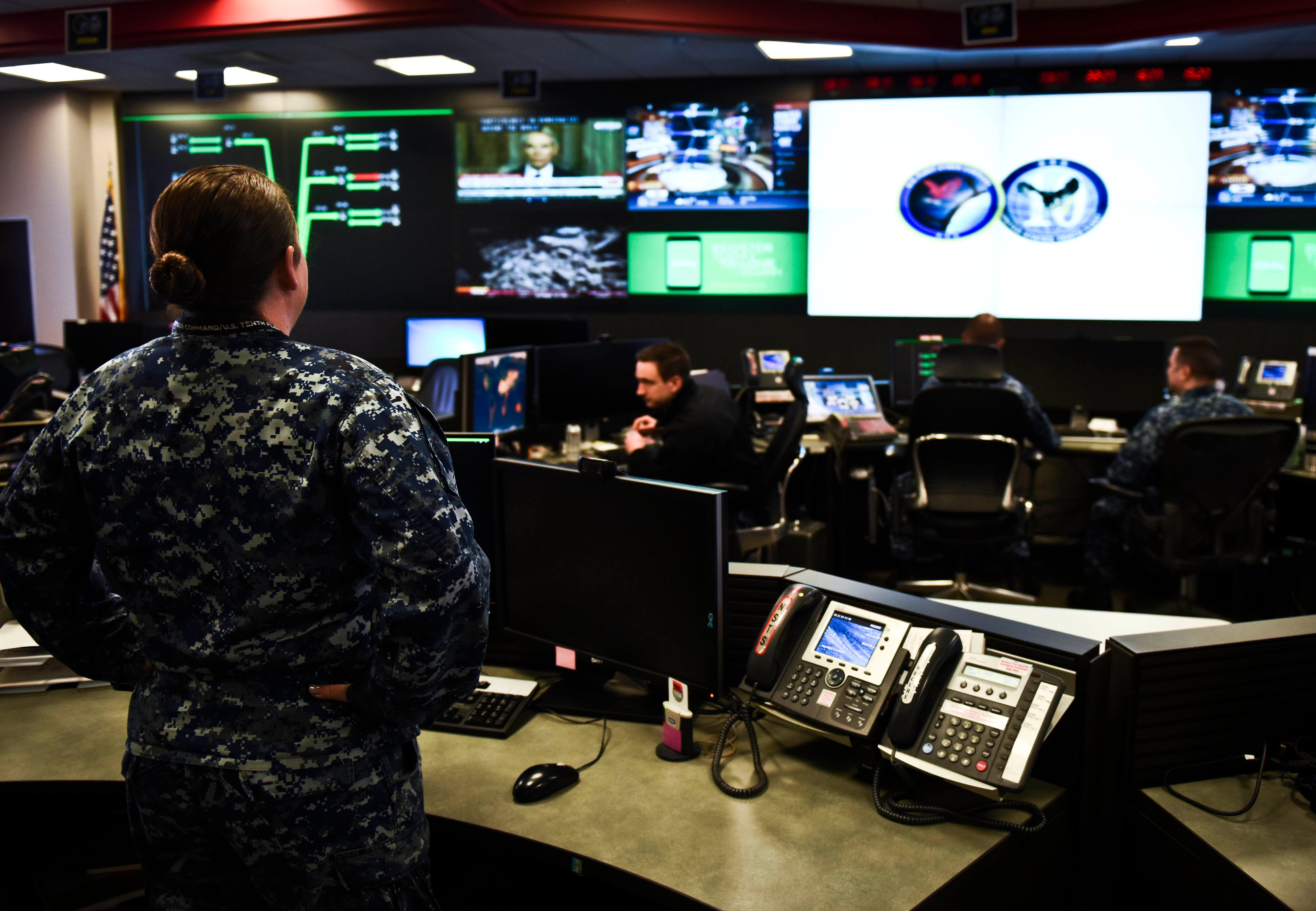By: John Grady
 Sailors stand watch in the Fleet Operations Center at the headquarters of U.S. Fleet Cyber Command/U.S. 10th Fleet.
Sailors stand watch in the Fleet Operations Center at the headquarters of U.S. Fleet Cyber Command/U.S. 10th Fleet.
A previous version of this post contained a story that had previously run in USNI News last month. It now contains the correct story from the Feb. 14 hearing before the Senate Armed Services personnel subcommittee.
Having struggled last year to meet its recruiting goals, the Navy’s personnel chief sees “difficult times ahead” in attracting and keeping sailors and officers as the sea service expands the fleet in the coming years.
Testifying Wednesday before the Senate Armed Services personnel subcommittee Wednesday, Vice Adm. Robert Burke said, “Certain fields are in short supply” — specifically citing nuclear, advanced electronics, aviation and cyber.
In budget documents released early this week, the Navy is expected to add 7,500 more sailors than it did last year to bring end-strength to 335,400 and projected to have an end-strength of 344,800 by 2023. The anticipated manpower growth is to fill billets in the increased number of ships coming into the fleet.
The situation in recruiting and retention “requires close attention.”
Steps the Navy is taking to spur recruiting and improve retention are both monetary and non-monetary, he said.
In the Fiscal Year 2019 budget request, there is an across-the-board military pay increase of 2.6 percent. In addition, the service is requesting $318 million for retention bonuses, up from $254 million two years before and $92.2 million in recruiting bonuses, up from $23.4 million two years before.
There were also requests for higher flying duty and at-sea pays for FY 2019.
On the non-monetary side, Burke told the panel that the incentives offered through the Sailor 2025 is having a positive effect on retention. Marketplace detailing, for example, has been used increasingly by sailors to keep their families at the same homeport for their next assignment, helping spousal employment. It also allows sailor career progression in the Navy and meets service manpower needs.
“Constant rotation … causes stress on the force,” Robert Wilkie, undersecretary of Defense for personnel and readiness, said. In addition to the constant moving affecting spousal employment, it also takes a toll on unit cohesion, he said later in answer to a question. He added he has been tasked by Defense Secretary James Mattis to review personnel policies in infantry units in the Marines and Army that affect cohesion. “Family stability is key to cohesion,” he added, earlier noting 70 percent of the force is married.
For the Marine Corps, Lt. Gen. Michael Rocco, deputy commandant for manpower and reserve affairs, said the Marines take the family’s situation into account before making a permanent change of station move.
Looking at the Marines overall personnel picture, Rocco told the panel that quality recruiting remains very high, as does retention, but did ask the committee to look at “lineal list flexibility” to reward talented officers in promotions.
On other ways to improve retention, Burke and the other service personnel chiefs said they are looking at “up-and-return” policies for members who want or require a break in active service.
“The Navy thinks it has a lot potential,” Burke said. He added the service has been “filling hundreds of gaps at sea on the enlisted side” through such a program. For the officers, it is more difficult because of service needs and restrictions built into the Defense Department’s officer management program.
He said the Navy is prepared to pilot initiatives in this area.
Mentioned by the chiefs during the hearing to help “up-and-return” rather than “up-and-out” were longer careers — 40 years instead of 30, not as sharp a rank pyramid to allow longer careers and lateral transfers, more effective and different use of the reserve component including changes in Titles 10 [covering active force and those reservists and guardsmen on federal active service] and 32 [covering National Guard on state service].
An immediate personnel problem is the large number of non-deployable members on active service, the Pentagon’s personnel chief said.
To ensure the men and women the services are recruiting and are now in the ranks can be sent overseas, Robert Wilkie, undersecretary of Defense for personnel and readiness, said he is issuing a directive this week to get at the “staggering number” of non-deployables.
“Thirteen to 14 percent of the force is medically unable to deploy” for 12 months, Wilkie said, putting some of the blame on the department itself. Internal reasons include dental care and previous medical waivers for enlistment to meet the manpower requirements of the “surge” in Iraq in 2007-2008. He said the number of non-deployables exceeds 240,000 members on active duty and in the reserve components.
He added the new policy will not apply to pregnant or post-partum service members, and medical review boards will be in place for recovering wounded members.
No comments:
Post a Comment